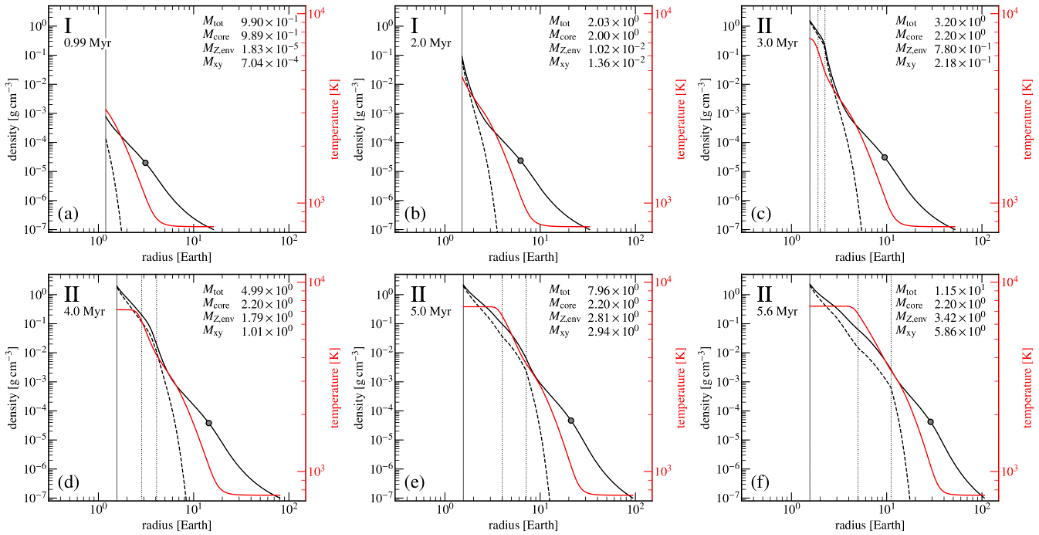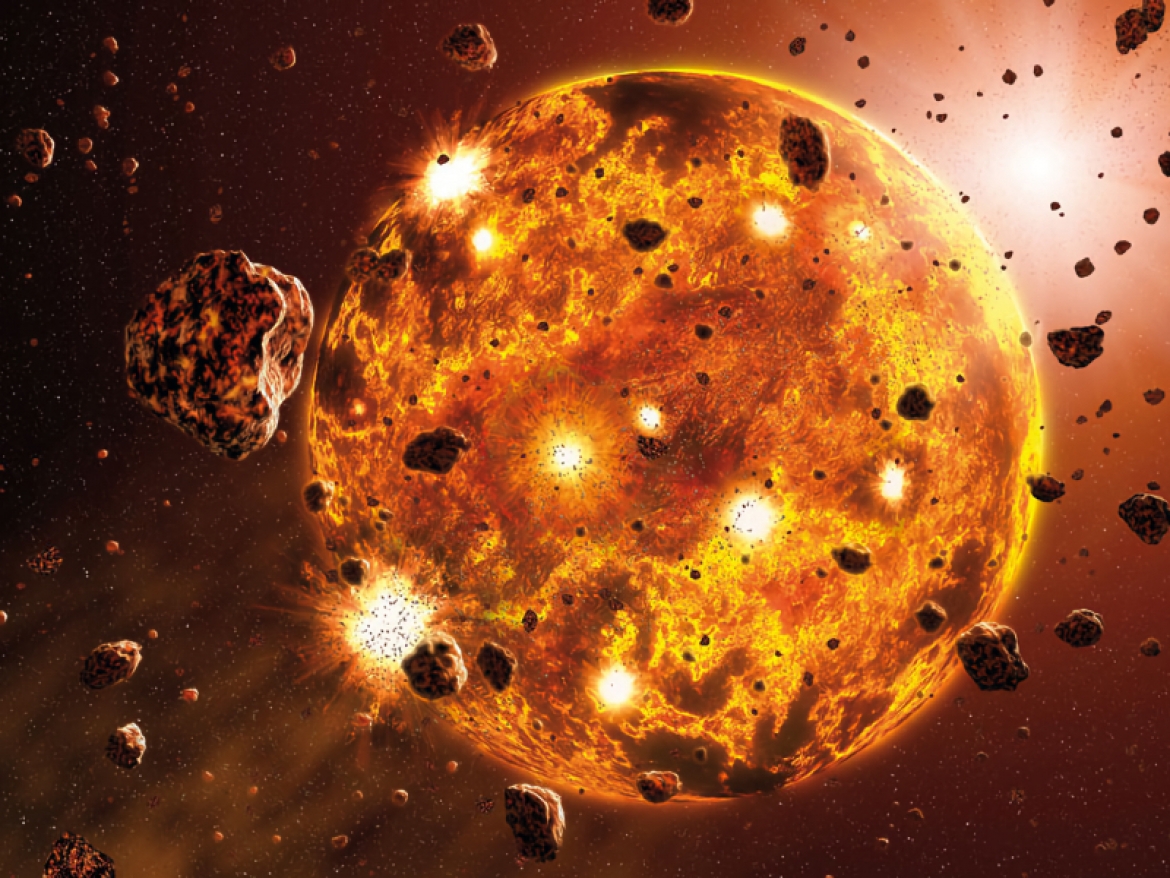Forming planets by pebble accretion: a metallicity gradient emerges
Following our previous research efforts, we have conducted numerical calculations about the thermal evolution of the envelope of pebble-accreting protoplanets. These protoplanets emerge early, when the protoplanetary gas disk is still present. Due to the accretion of solids, their envelope becomes hot, sublimating the infalling pebbles and transforming mm-sized solid particles (“pebbles”) into a metal vapor (e.g, SiO2). This transformation greatly affects the thermodynamical evolution of the protoplanet. For example, planets end up with a small "core" but may still undergo runaway gas accretion due to the high molecular weight and small pressure scale height of the atmosphere.
Using a novel numerical scheme we can now simulate the thermal evolution of the envelope for the entire period during the growth of the planet by pebble accretion: from their humble beginnings as rocks to the point where they enter runaway gas accretion. In the figure it is shown how the profiles of total density (solid black), vapor (sublimated pebbles; dashed black) and temperature (red; right y-axis) evolve with time. Initially, most pebbles end up in the core, but after it reaches slightly above 2 Earth masses pebbles completely evaporate. Thereafter, the vapor mass (MZ,env) of the envelope rapidly increases. But the contribution of H+He gas, accreted from the gas disk surrounding the planet, also increases rapidly (Mxy). If the gas disk by this time (~5 Myr) has not dispersed, the planet can accrete much greater amounts of H+He gas and will turn into a Jupiter planet (not simulated).
What we end up with is an envelope characterized by a composition gradient. At late times it can clearly be seen that the ratio ρ/ρZ is decreasing within the envelope (the space between the two black lines is increasing throughout). Interestingly, this feature is in striking resemblance to the inference of a so-called "dilute core" for Jupiter by the JUNO mission. Jupiter’s metallicity graduallyincreases throughout its deep interior, instead of a sudden increase due to a solid core. In future work we will further investigate the connection between the formation scenario (e.g., pebble accretion) and the inferred internal structure of the solar system’s giant planets.
References
Ormel, Vazan, & Brouwers:
How planets grow by pebble accretion. III. Emergence of an interior composition gradient
Accepted for publication in Astronomy & Astrophysics:
https://arxiv.org/abs/2010.14213




